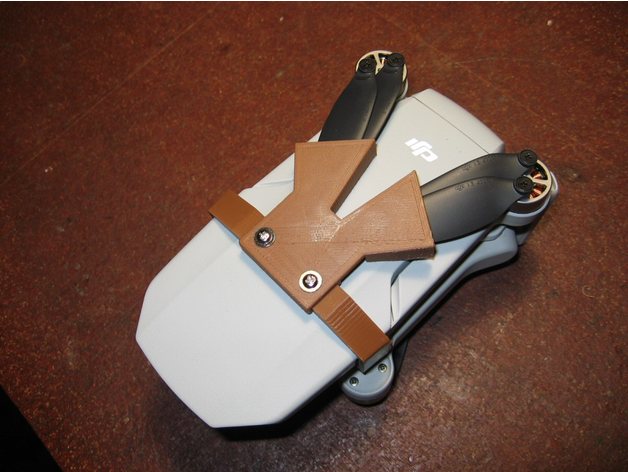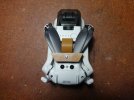That, in fact, is the critical detail.
The Motor Speed Error message tells you to inspect the propeller blades on the affected motor. On mine, there was nothing
visibly wrong with the blades. They looked perfectly fine to me. It was only after replacing the left-rear blades that I could see the obvious difference compared to the right-rear blades. Note how high the tips of the new left blades sit, compared to the droop in the tips of the right blades.
View attachment 106025
If you were instead expecting to see obvious cracks or chunks missing out of the blades, the difference in prop shape is quite subtle and easily overlooked, So people tend to take only a quick glance at the props, see nothing obviously wrong, and they dismiss the warning as an annoying firmware defect that should be ignored.
A
conclusive method of measuring for yourself whether the propeller blades actually have degraded lift efficiency is to do a simple hover test. Press auto-takeoff, allow the Mini to stabilize in a hover for a couple of minutes, then auto-land, all without touching the control sticks. Doing it indoors is preferable as it minimizes the influence of wind. Then access the flight log DAT file to plot the motor speeds using
CsvView.
For example, this is a plot of my motor speeds on the flight that first triggered the Motor Speed Error warning for me. The lines jump all over the place because it was a windy day and I was flying the Mini back and forth. The only thing to note in this plot is that the left-rear motor (blue line) is turning consistently much faster than the others, reaching a peak of 16,000 rpm.
View attachment 106030
Next is the plot of the hover test after replacing the left-rear (blue) propeller blades. Note the improvement in the blue line, and that now the right-rear motor (yellow line) is the one spinning consistently fastest.
View attachment 106031
Next I replaced the right-rear (yellow) prop blades. Note how the blue, red, and yellow lines are now fairly even, while it is the left-front (green) running consistently the fastest.
View attachment 106033
It wasn't a critically big difference, just a noticeable and obvious consistent difference in motor speed. The left-front (green) props didn't
need to be replaced, but for the sake of scientific experiment I also swapped in a set of new left-front prop blades.
Here is the result of a hover test with new props, all except the right-front (red) which is still the original set.
View attachment 106034
Even though this hover test was done indoors, the propwash is enough to cause turbulence so that the flight controller needs to make small corrections to hold the Mini in a stable hover. That creates minor motor speed fluctuations in the plotted lines. If you do this test outdoors on a windy day there will be greater fluctuations in the lines. What you're looking for in any case is any significant
difference in one motor running
consistently faster than the others.
At hover, with new props installed, the motors should all be turning at near equal speed around 9600 rpm.
The point is, even if you can't visibly detect anything wrong with the propeller blades identified by the Motor Speed Error (ESC) warning, this hover test will conclusively demonstrate whether there is an issue or not.
The graphs above document an obvious difference between the motor speeds running on old versus new propeller blades. How
much of a difference you are willing to tolerate is up to you. But if any of your motors are running at such an elevated speed sufficient to trigger the new Motor Speed Error warning, then it's certainly something you should pay attention to.
Do not trust people telling you the props are fine as-is, or that the Motor Speed warning is merely a firmware bug. Do NOT downgrade to a previous firmware version to prevent the warning message from ever reappearing. Test the props for yourself. Do the hover test, plot the data, and then decide for yourself based on real evidence.

















